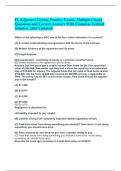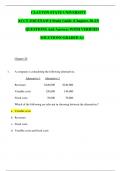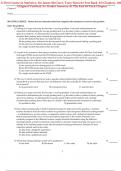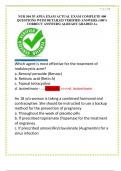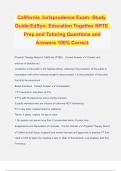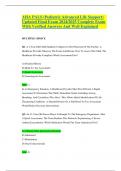Exam (elaborations)
FL Adjusters License Practice Exams. Multiple Choice Questions and Correct Answers With Complete Verified Solution. 2024 Updated.
- Course
- Institution
FL Adjusters License Practice Exams. Multiple Choice Questions and Correct Answers With Complete Verified Solution. 2024 Updated. Which of the following is NOT one of the four critical elements of a contract? (A) A mutual understanding and agreement with the terms of the contract. (B) Wr...
[Show more]
